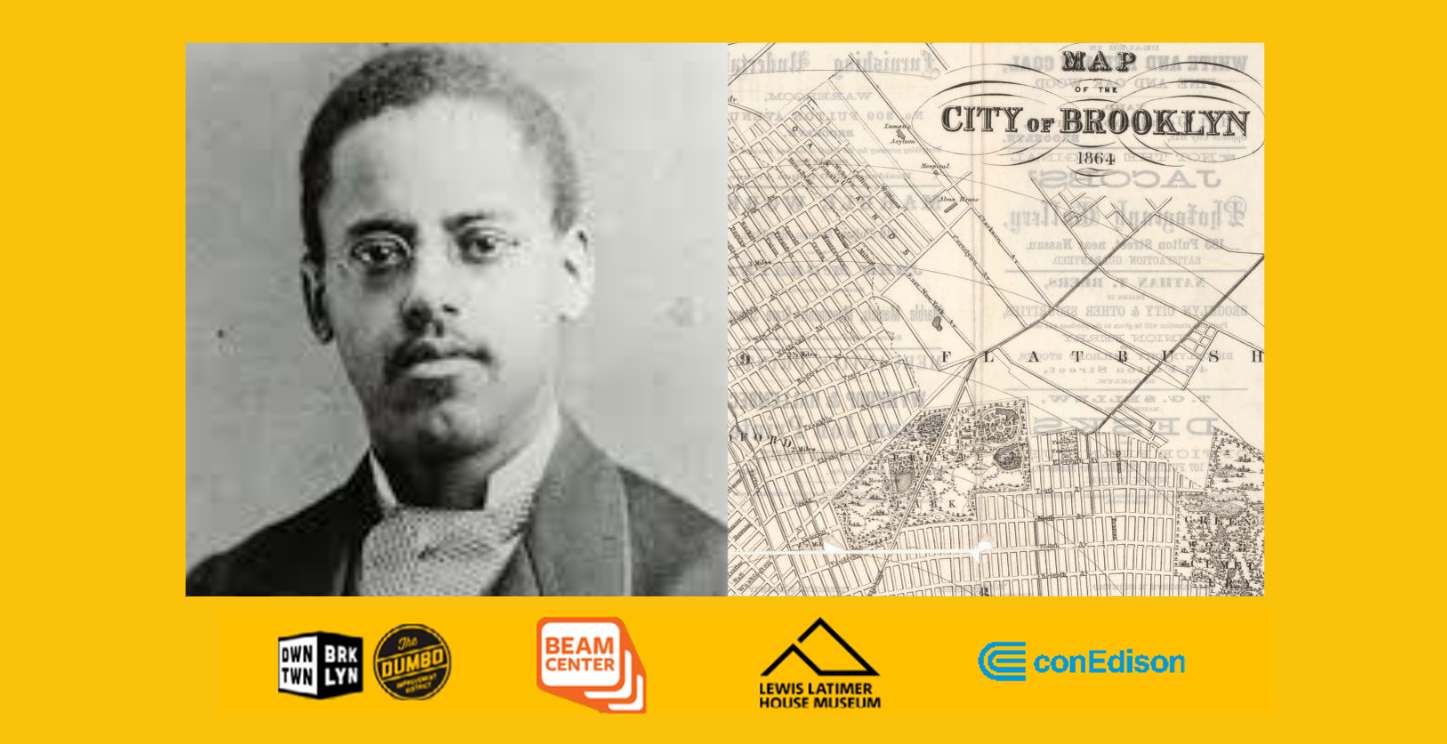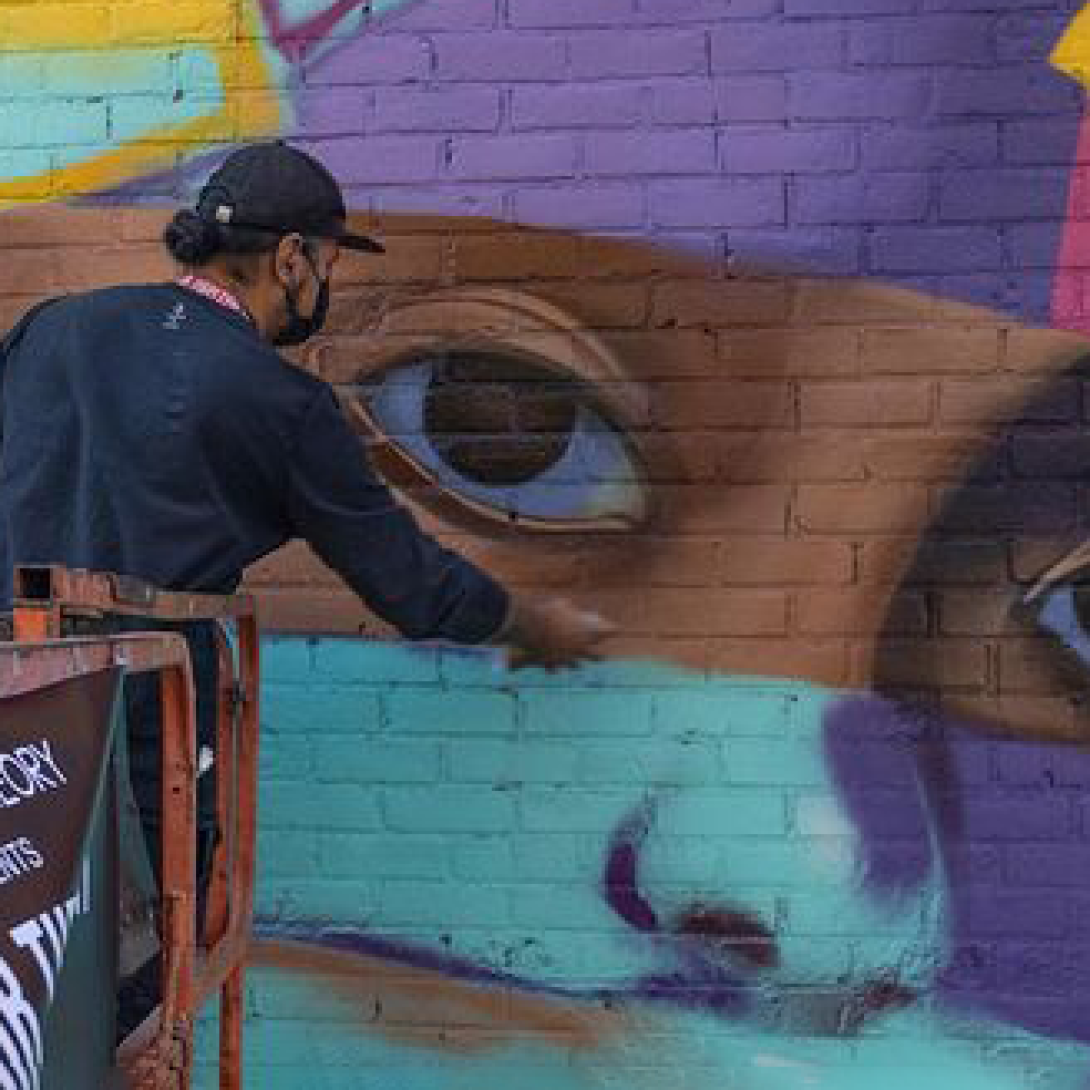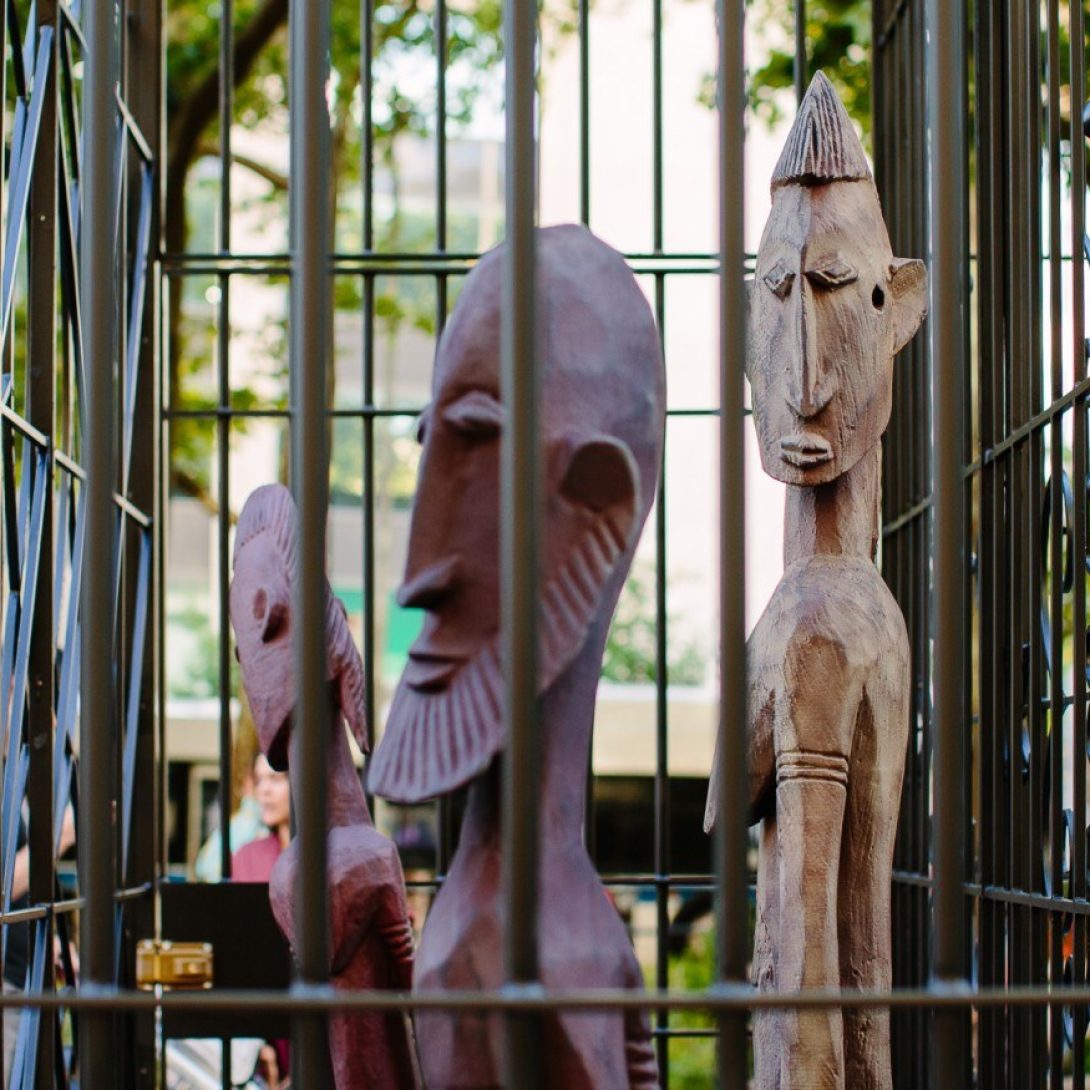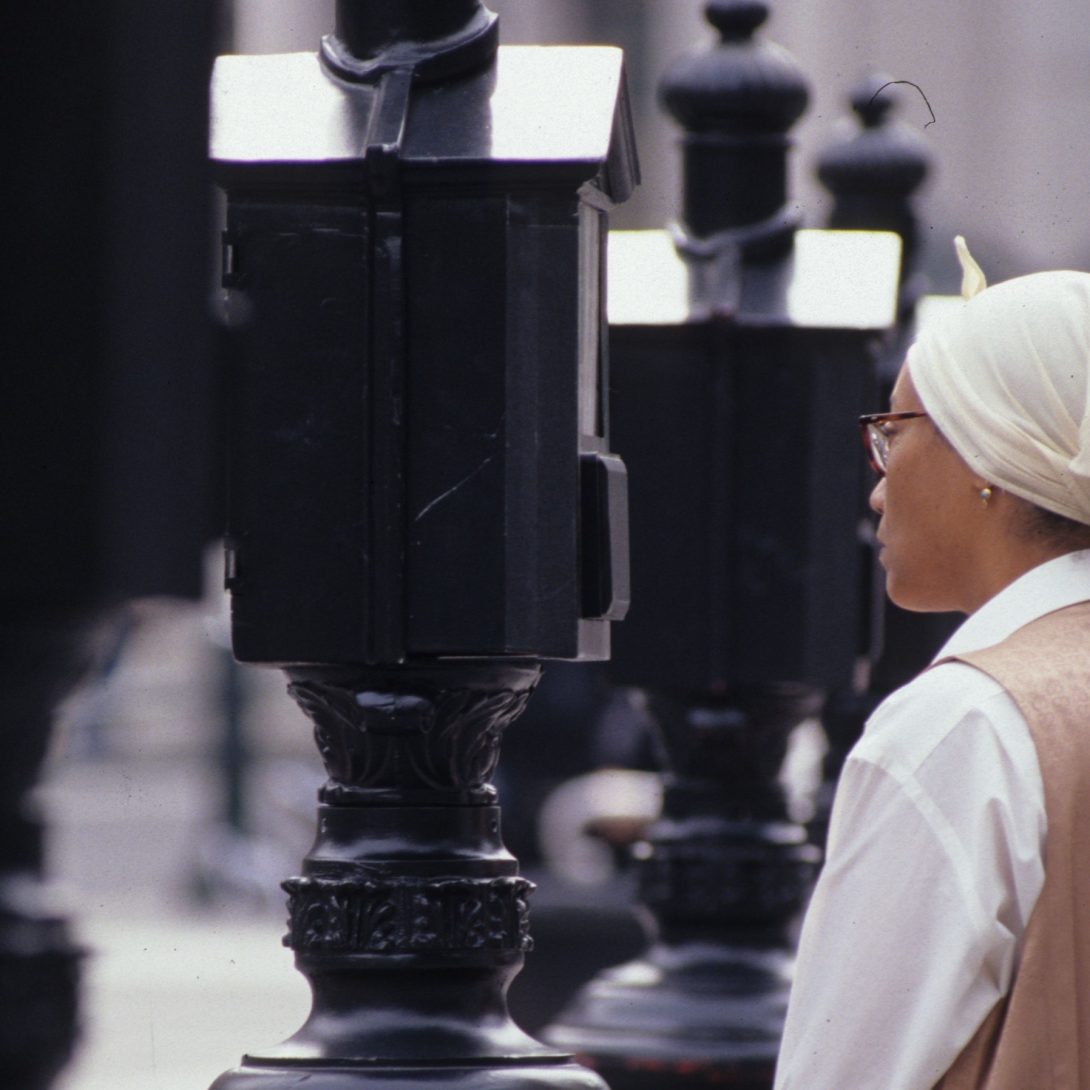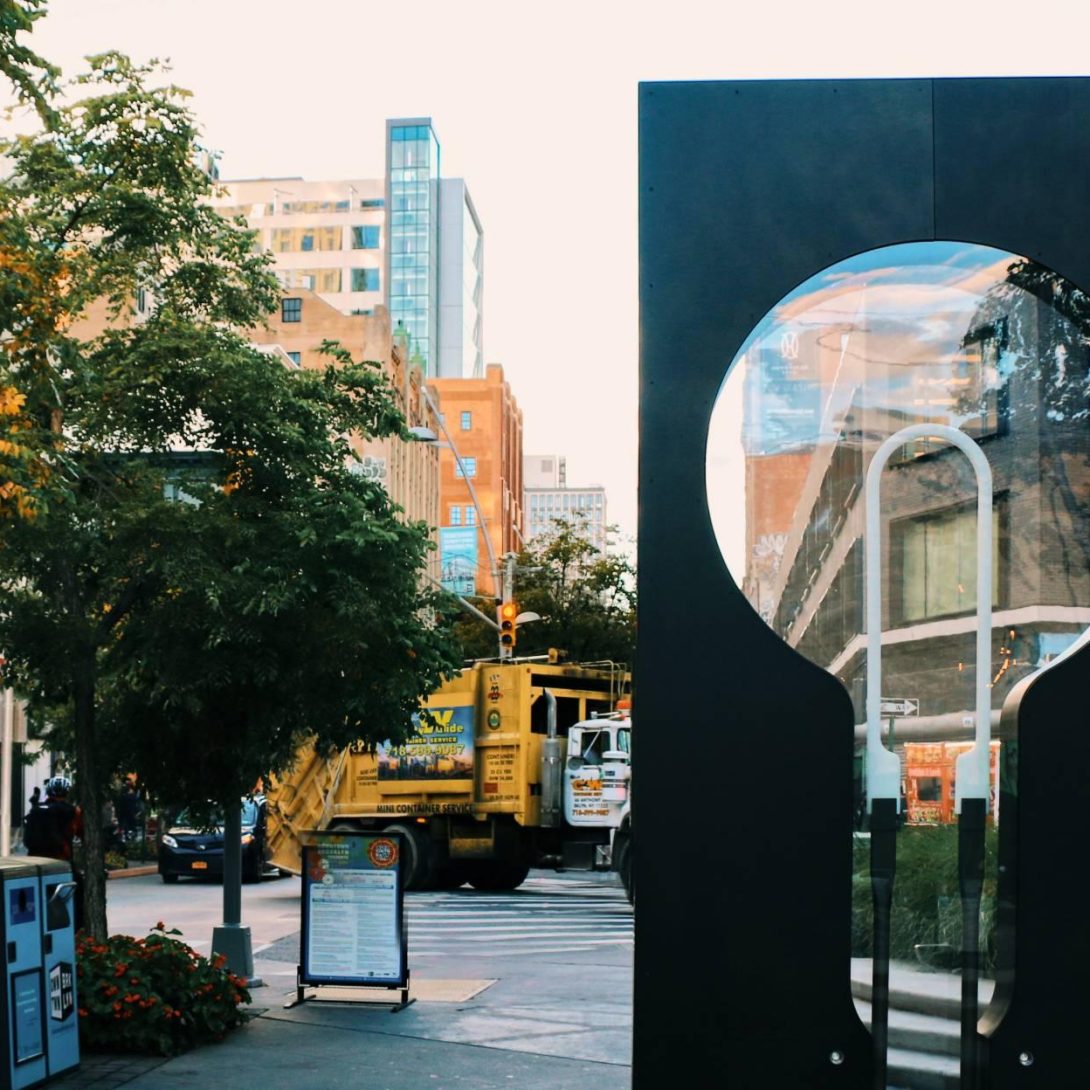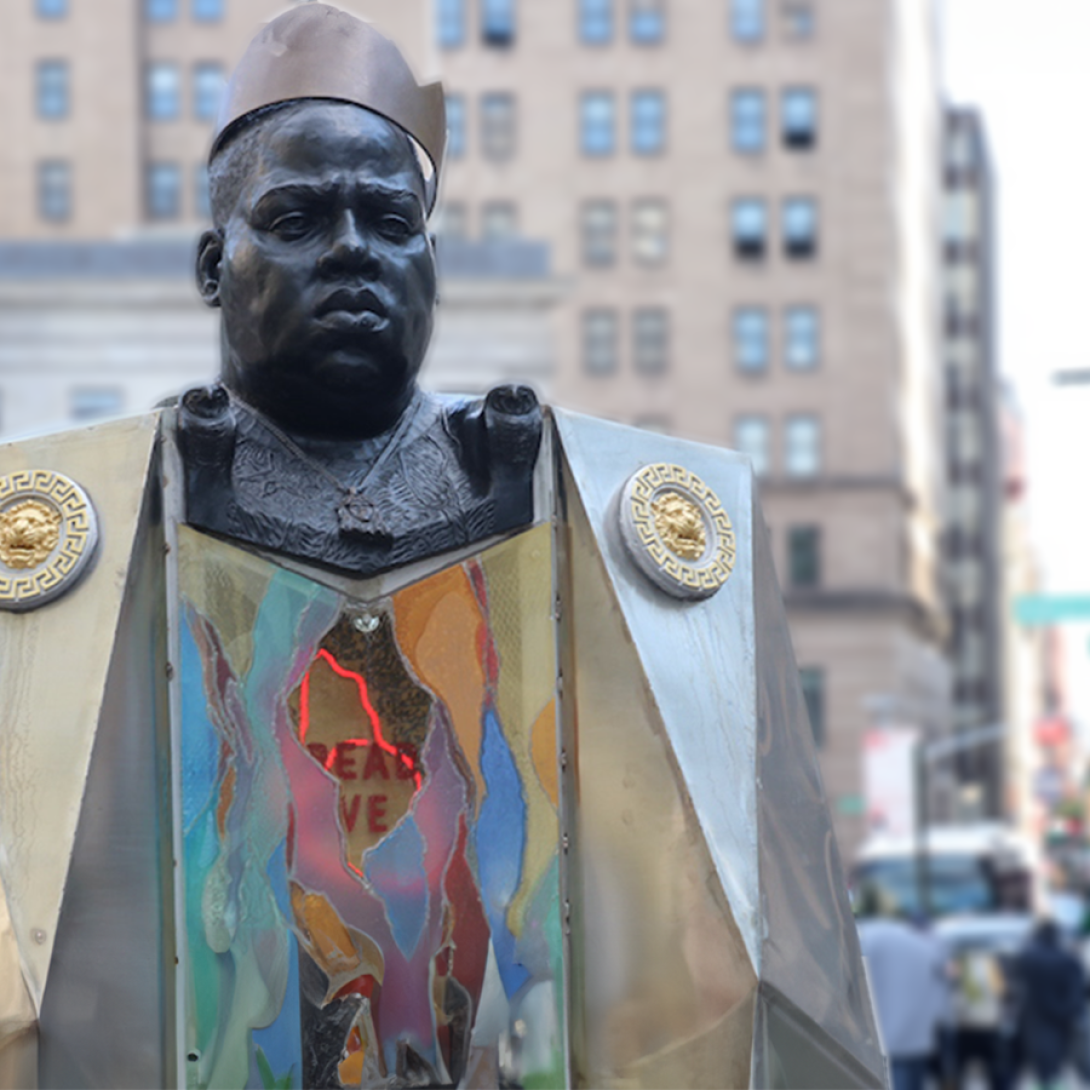In fall 2021, Downtown Brooklyn Partnership (DBP) and Beam Center unveiled artist Shervone Neckles’ BEACON, an interactive 13’ tall steel and LED sculpture inspired by African American inventor Lewis H. Latimer’s 1881 patent for the electric lamp and 1882 patent for the process of manufacturing carbon filament in the incandescent light bulb. The installation at Albee Square was made possible with support from Con Edison and a grant from the Downtown Brooklyn + Dumbo Art Fund, which has provided $600k in funding for public art, performance, and accessibility projects that serve to enhance public space, increase access to cultural programming, and connect the neighborhoods of Downtown Brooklyn.
To further highlight Latimer’s legacy, Shervone Neckles, Brooklyn historian and scholar, Prathibha Kanakamedala, Lewis Latimer House Museum Executive Director, Ran Yan, Beam Center’s Zélie Lewis and Brian Cohen, and DBP President, Regina Myer, convened for a virtual discussion exploring Latimer’s life, work, and activism in 19th-century Brooklyn.
Shervone opened by explaining how the installation of BEACON at Albee Square is a homecoming of sorts for both her and Latimer. As a teen, Neckles frequently visited Fulton Mall with friends and family, never imagining that it would one day serve as the site for one of her works of art. The neighborhood was also home to Latimer and his family between the years of 1893 and 1902, making the installation of BEACON over 100 years later a full-circle moment.

Yan laid out details of Latimer’s life. Born in Massachusetts the son of fugitive slaves, Latimer was a self-taught master draftsman, an expert on patent law, a poet, and a painter – a true Renaissance man. He became head craftsman of a patent law firm before working for inventor Hiram Maxim at the American Electric Light Company, where he would design a new, longer-lasting carbon filament for the lightbulb and forever change Thomas Edison’s invention. Yan also discussed the legacy of Latimer’s wife, Mary Wilson Latimer, who was a staunch supporter of his career and essential to his success.
Kanakamedala put Latimer’s life into context within the broader history of Brooklyn and explained how it played a significant role in propelling his career. The Latimers chose to live in Brooklyn for many of the same reasons people move to Brooklyn today: to be at the center of economic development. Furthermore, Brooklyn traditionally had a thriving Black community and abolitionist leaders and saw the rise of the Black middle-class; a community the Latimers were very much a part of. It is fitting, then, that the center of 19th century activism in Brooklyn is now the land on which BEACON stands.
The discussion turned to the educational component of BEACON and how the sculpture was designed as a pedagogical tool bridging the humanities and STEAM disciplines. Brian Cohen of Beam Center talked about how the organization brings together young artists and engineers to produce ambitious projects like BEACON — similar to how Latimer combined his artistic and scientific expertise to produce revolutionary patent drawings. “It was the expansion of [Latimer’s] own thinking and creativity that we hope inspires the young people who work on these projects,” said Cohen.
Lewis H. Latimer left a remarkable legacy. BEACON proudly celebrates this by engaging the public in local history and by commemorating his scientific and economic contributions to society and the electrical engineering field. The virtual discussion painted a rich picture of Latimer’s life in context with the sociopolitical milieu of his time, and brought to light the oft-overlooked greatness of 19th century African-Americans.
Watch the discussion below (begins at 7min15sec):

